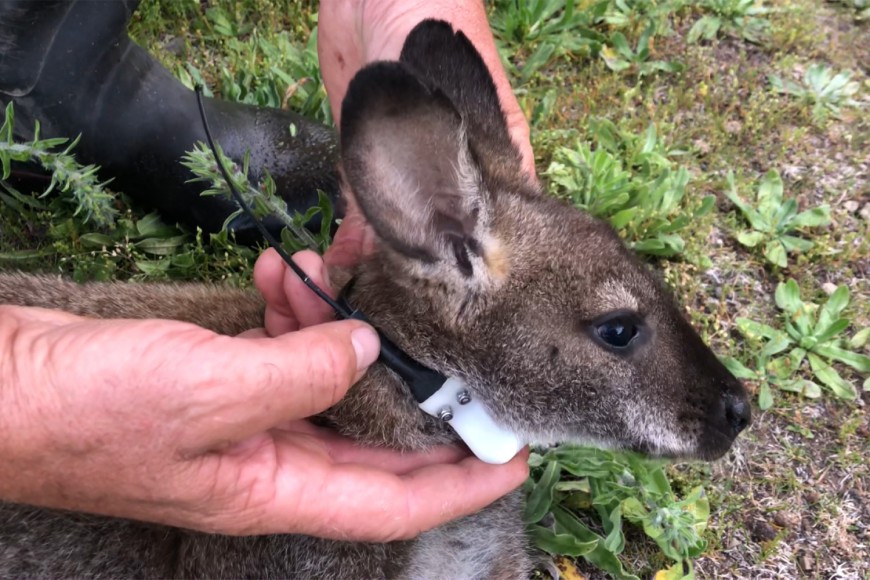A Manaaki Whenua research team used ground-based tunnel nets to capture and collar 80 sub-adult wallabies in Canterbury. The sub-adults are more likely to disperse than adults, providing valuable data on dispersal behaviour.
The captured wallabies were immobilised and fitted with satellite collars to track their movements for up to 12 months. The collars were programmed to balance longevity with frequency of location data collection after the wallabies were released.
As well as analysing and defining dispersal events, looking at movement and settlement ecology, and evaluating habitat selection, the data will be used to compare different methods for assessing dispersal ecology, including genetics and stable isotopes.
“The location data obtained will contribute to understanding the spatial ecology of Bennett’s wallaby and may inform other research areas such as genetic modelling. If successful, this methodology could pave the way for a similar research project focusing on the dispersal ecology of dama wallabies,” says Dave.

A Bennett’s wallaby is fitted with a tracking collar as part of a tracking programme

